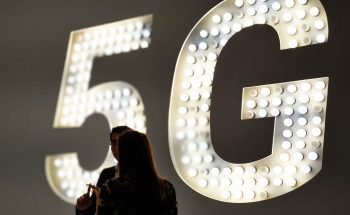
This is not the 5G you’re looking for
At CES in January and again at Mobile World Congress in February companies were inundating us with their 5G smartphones and various other 5G devices. As per usual, these devices weren’t actually available right away, but since there were no 5G networks available this wasn’t terribly surprising or concerning for those interested in the next generation wireless standard.
But fast forward to this week and we’ve finally had some movement on the 5G networks from AT&T and Verizon that hope to power this multitude of devices later this year. Awesome! Let the 5G party commence!
Well… not so fast.
AT&T
Let’s address AT&T first, as the company is certainly doing everything in its power (other than actually being the first with a 5G network) to establish itself as the first mover in 5G with it’s disingenuous “5G E” rebranding of its 4G network. For those of you that were around for the 4G transition, this might sound familiar, but back then it was AT&T complaining that T-Mobile was misusing the 4G name for its HSPA+ network. Apparently, they’ve had a change of heart about devaluing terminology in the intervening years.
I’m not going to bother to address it’s 5G E network as we’re talking about actual 5G here and this flatly isn’t it. So in real 5G news this week, AT&T reported that it managed to achieve gigabit speeds in one of its test cities using a Nighthawk 5G mobile hotspot. That’s impressive, but access is still limited to AT&T itself and some preselected users. So while it is definitely encouraging as this isn’t a pure lab test, I’m not going to treat it as real-world testing either. It’s also critical to note that this is a mobile hotspot in a fixed position rather than a mobile phone, which is what most of us are actually interested in.
AT&T is still claiming a “nationwide” rollout in 2020, but it remains unclear what exactly that means to them (and we’ve already established they are happy to play fast and loose with definitions) as they currently have a limited presence in a little over 20 cities. Sometime in the second half of 2019 we are going to see actual 5G phones shipping on AT&T, at which point we’ll finally have some answers, but even if you live in the heart of one of AT&T’s 5G cities I’d think long and hard about spending the extra money on a 5G capable phone this year.
Verizon
I’m giving Big Red some credit here as it didn’t just issue a press release stating the speeds it had achieved this week when it fired up 5G in Minneapolis and Chicago. Instead, we saw members of the press hitting the streets armed with Moto Z3s and 5G Moto Mods, a phone and accessory that are actually available for sale to anyone that is interested. And while I didn’t see anyone claiming to have experienced gigabit speeds, the Speedtest results posted by CNET, Engadget and others were at times upwards of 600 Mbps down which is the threshold that Verizon has typically claimed.
Unfortunately, that’s basically where the good news stops and also partially why I’m pouring a little cold water on the AT&T results from earlier in the week. Based on the actual real-world experiences here the 5G signal is extremely finicky. There were reports of the signal dropping due to shifting the phone in their hand, moving at anything other than a slow walk, and even while simply standing still within several feet of the 5G nodes that helped deliver the signal. While the decreased speeds would have revealed this, the enormous 5G UWB logo flashing back to the rationally sized and familiar 4G LTE logo demonstrated it as well.
While Verizon is technically behind AT&T at the moment, with its network only active in 2 cities, it plans to roll out to 30 cities by the end of the year. This should put them on relatively equal ground as far as footprint going into 2020.
All in all, while it was interesting to see the actual networks perform this week, it wasn’t a great debut for 5G and certainly didn’t leave me thinking anyone should be getting on board soon.
Hardware
This brings us to the hardware. In the next couple weeks we should be seeing the Samsung Galaxy S10 5G going up for preorder and based on what we’ve seen to date even if you live in one of the limited number of cities that are covered now or projected to be covered by the end of the year I can’t imagine recommending that you pick one up.
Now to some degree, this is scars from my personal experience with some of the first 4G LTE devices. The HTC Thunderbolt was such a horrendous device that it was almost 4 years before I used another HTC phone as my daily driver. The battery life was a mess (4-5 hours was a good day) and connectivity, which was in a considerably better place than 5G is now, just wasn’t pervasive enough to warrant the hassles.
And that was when we were experiencing a transformational step for mobile, going from 3G to 4G LTE was astounding and while 5G is another significant leap in speeds, it isn’t a leap that I need in mobile right now. I’m excited to see what can be done with 5G in the future, I just haven’t seen a smartphone based implementation yet that is going to radically change my day to day usage. I have no doubt it will come, but I have every reason to doubt that it will come in the next 18 months.